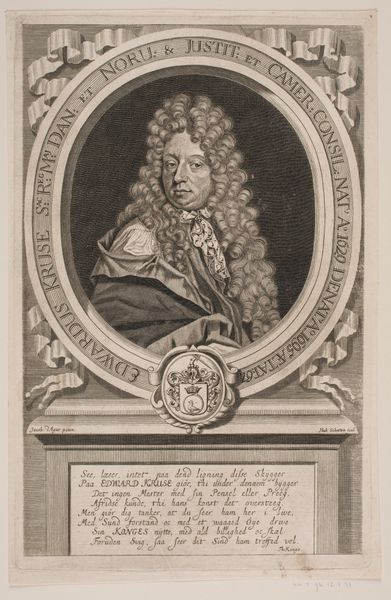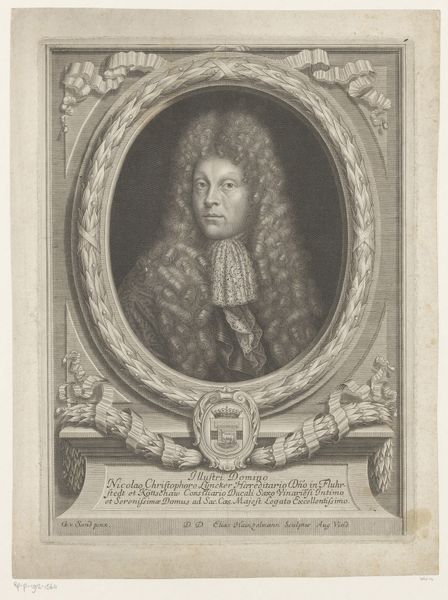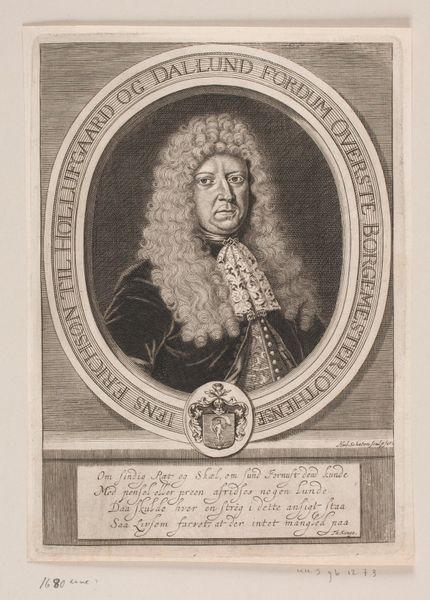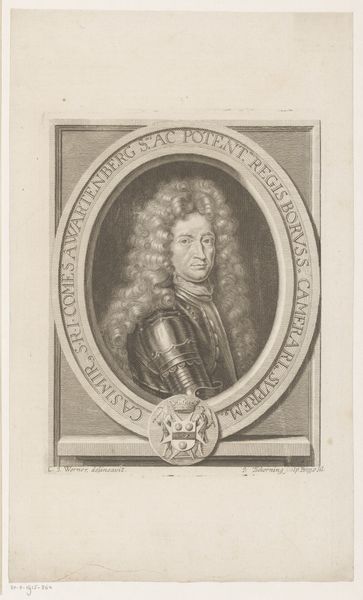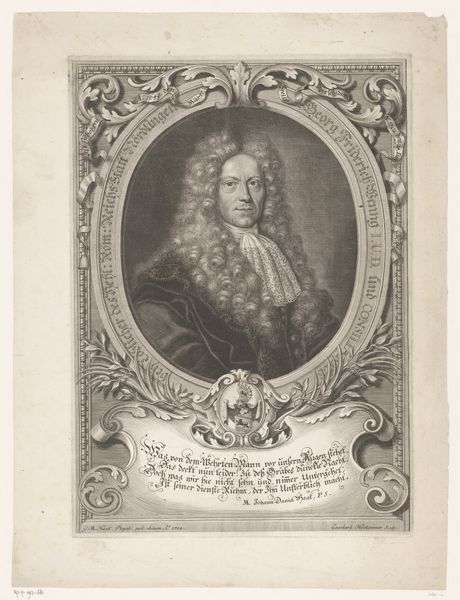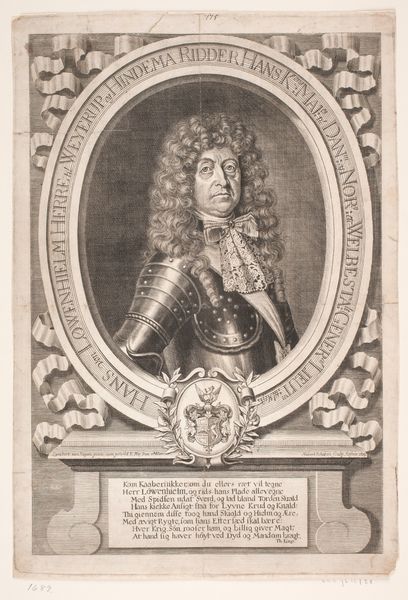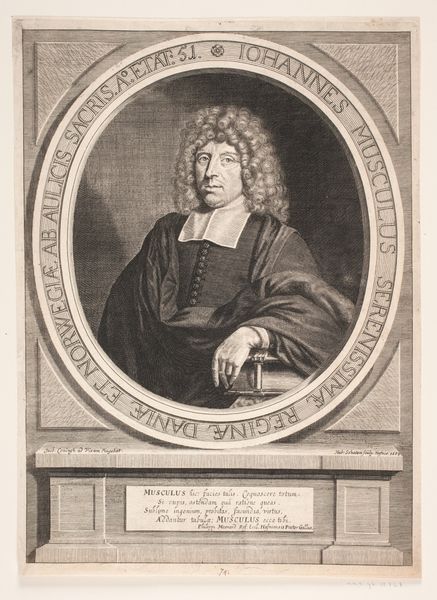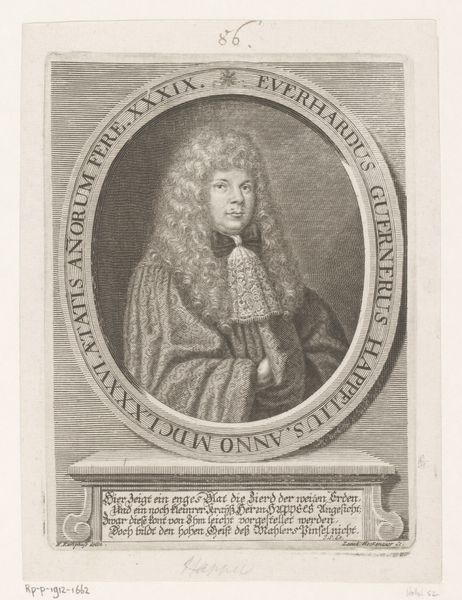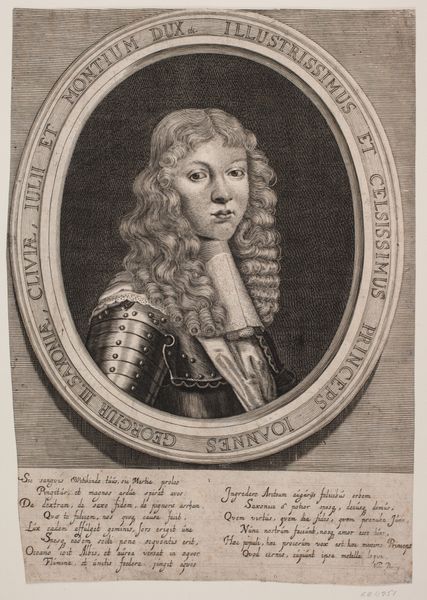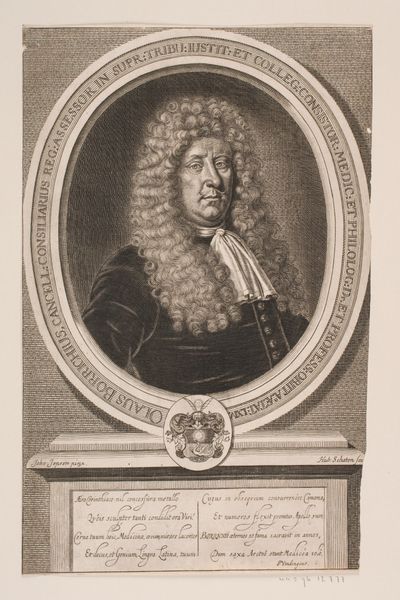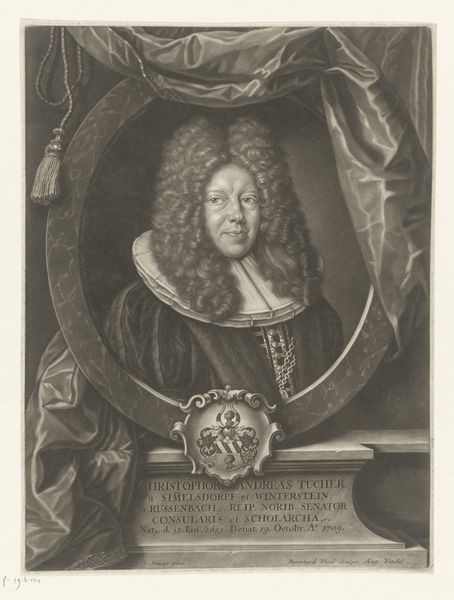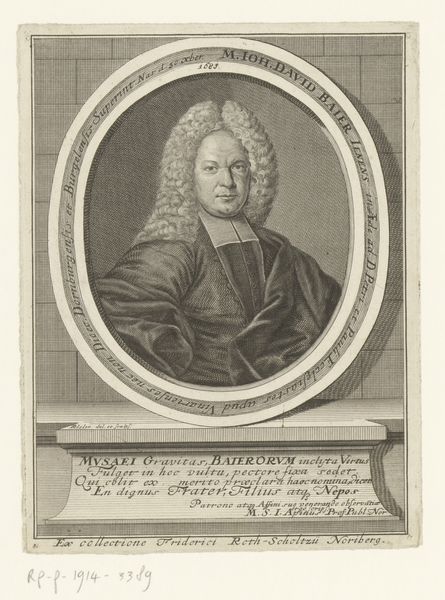
print, engraving
#
portrait
#
baroque
# print
#
old engraving style
#
history-painting
#
engraving
Dimensions: 296 mm (height) x 195 mm (width) (bladmaal)
Curator: Well, that's quite the wig! The level of detail the engraver captured is fascinating. Editor: Indeed. The artwork before us is "Købmand Heinrich Schupp," an engraving created between 1690 and 1696 by Hubert Schaten. It's currently housed here at the SMK, Statens Museum for Kunst. Curator: Knowing it's an engraving makes me appreciate the labor involved even more. Can you imagine how many hours it took to achieve this level of refinement? The cross-hatching alone... and for a merchant no less. It suggests the rising importance of the merchant class and its patronage in commissioning artworks at that time. Editor: Exactly. It highlights the social and economic shifts in late 17th century Europe. These merchants weren’t just nameless figures; they held civic importance, leading international trading companies and driving national wealth. The display of wealth in dress reflects the burgeoning economic power that reshaped society. Curator: Notice how the composition focuses on material representation? Look at the plush velvet of his coat, the intricate lace – even the texture of the paper. Hubert Schaten is really documenting status, achieved, and consumed. This makes the “high art” process of engraving accessible to merchant consumers as another material good, while legitimizing new status through aesthetic production. Editor: It's also interesting how the portrait presents a very controlled image. His gaze is direct and unwavering. Curator: Which strikes me as a calculated decision. The texture suggests wealth and industriousness rather than divine grace. His identity becomes intertwined with the things he possesses. He quite literally embodies consumption! Editor: I’d agree. He’s less a personality and more an artifact of political and economic systems—of trade routes, access to goods, and patronage networks. He *is* material. It gives you so much insight to social hierarchy and shifts. Curator: I hadn't quite considered it that way. Thinking about the historical context enriches our understanding. It is good to see Schupp so thoroughly rendered—his material existence given a certain prominence within an ever-evolving cultural and commercial landscape. Editor: Absolutely, examining artwork through multiple angles – like process, materials, social history and intent helps in making accessible not just aesthetics, but its complex tapestry to which both artists and patron were connected.
Comments
No comments
Be the first to comment and join the conversation on the ultimate creative platform.
